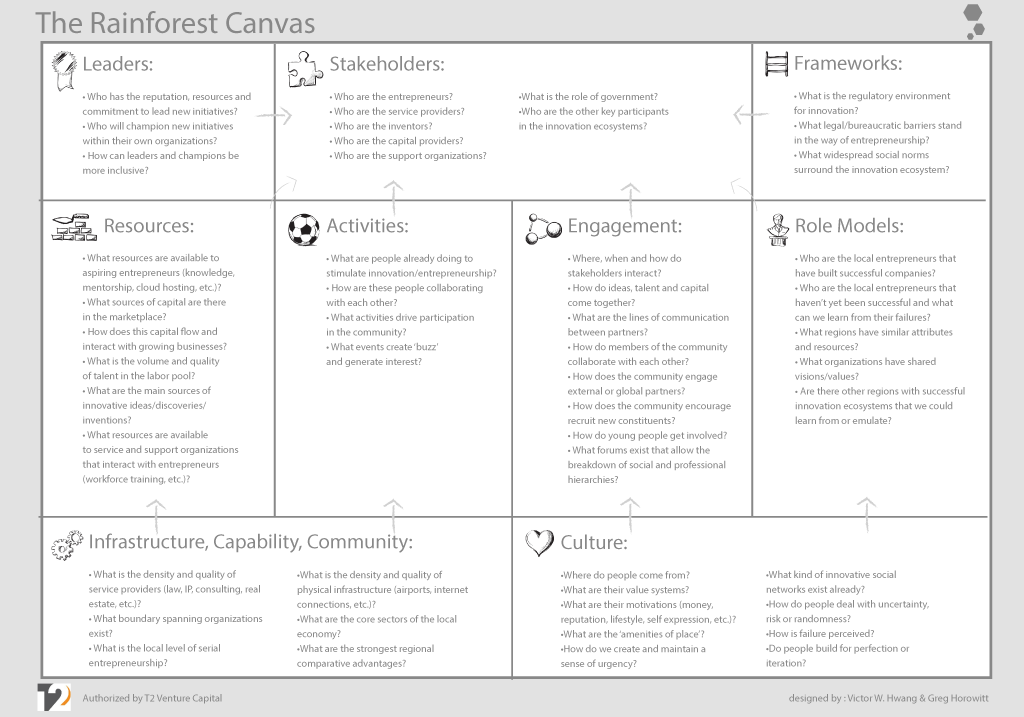Rainforest Canvas's Creators
Victor W. Hwang & Greg Horowitt
Victor W. Hwang and Greg Horowitt are experienced venture capitalists, who have both also led organizations designed to further the growth of innovation economies and are now advising around the world. The Rainforest Canvas is based on their book “The Rainforest: the Secret of Building the next Silicon Valley”...
Description of the Rainforest Canvas
Innovations are like weeds and, as such, are birthed and sprout best in uncontrolled environments such as the Rainforest. In their book, “The Rainforest: The Secret to Building the Next Silicon Valley“, Greg Horowitt and Victor Hwang outline the key elements of an entrepreneurial ecosystem fostering innovation.
As they describe, building a Rainforest can generally be divided into three steps: SEED, CULTIVATE and NOURISH. The Rainforest Canvas is a great tool to draw a high level picture of your own Rainforest. Generally, this exercise is undertaken during the SEED phase, when it’s important to build up early understanding of the key building blocks of your ecosystem.
The canvas is divided into blocks. Each block represents a critical piece of your Rainforest. They are interdependent, just like the flora and fauna in a natural rainforest.
As an real ecosystem, a Company, Organization, or Hometown Rainforest will evolve, adapt and grow with time. When used on TUZZit, the Rainforest Canvas can be used to keep track of this change and to understand what actions need to be taken to make the Rainforest flourish.

